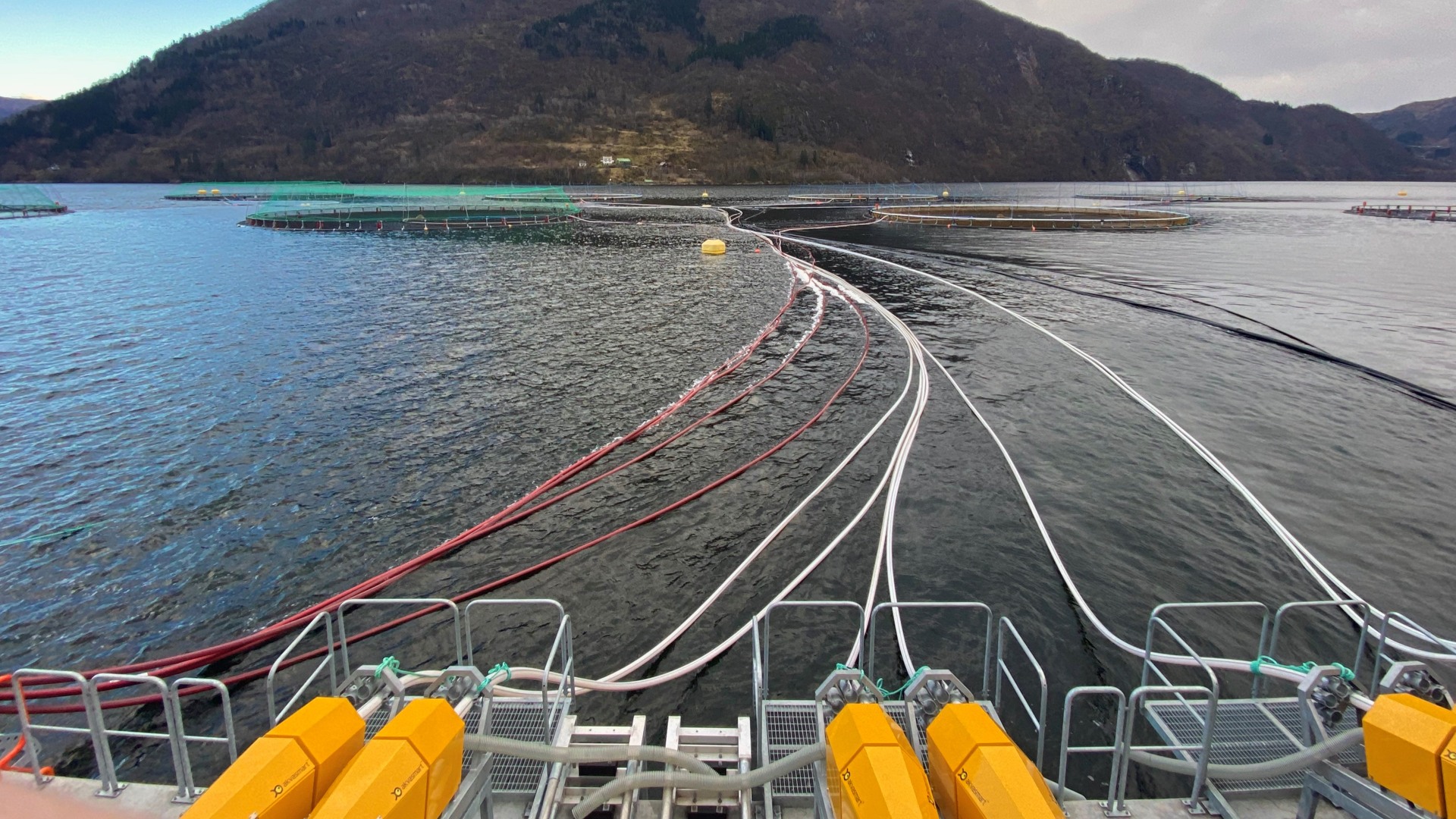
Norwegian fish poop can replace Russian gas and phosphorus
Every year, thousands of tonnes of sludge from Norwegian fish farms leak straight into the ocean. Now new technology puts this waste to use, both as a major source of energy and to produce the nutrient phosphorus, which Europe is importing from Russia. The Havbruk project give the Nordic region a new, global multi-billion industry, while enabling expanded fish farming without harming the coastal environment.
06 Feb 2023– Circular solutions for fish-farm waste means a lower climate impact, less pressure on the marine environment in the fjords and more fish, while making Europe less dependent on importing energy and nutrients. This way we contribute to mitigating both the climate crisis and the global food crisis, says Vidar Svenning Olsen, CEO of Ragn-Sells Norway.
In 2022, the export value of Norwegian fish farming was over 100 billion NOK (about 10 billion euros). But the successful industry has a major challenge: the fish faeces and waste feed sink through the netpens and are flushed into the sea. This sludge, packed with nutrients such as phosphorus and nitrogen, can affect the coastal environment, and the opportunity to make use of the highly valuable nutrients is lost.
The ARAL initiative, a business network in which Ragn-Sells participate, has the potential to solve both problems at once – and others to boot.
– If we are serious about building a sustainable society, we have to start using the materials we already have, over and over again. This is especially true for raw materials that are increasingly difficult to source, such as phosphorus, which is needed in both agriculture and livestock breeding, says Pär Larshans, Director of Sustainability at Ragn-Sells Group.
The sludge is taken care of
As a first step, the sludge is collected at the bottom of the netting instead of sinking straight through it. Next, the sludge is filtered and transported to facilities that separate out more water. Ongoing work aims to also capture the nitrogen at this stage, another valuable fertiliser component. The sludge is then used to produce energy-rich biogas. Finally, after incineration, more than 90 percent of the phosphorus in the ashes from the burnt sludge can be extracted using technology developed by Ragn-Sells innovation company EasyMining.
Once the phosphorus is used in new fish feed, the loop is closed. Each time around, large amounts of energy are produced.
– The amount of phosphorus released into the ocean from fish farms in Norway every year would be enough to supply every Swedish farmer with phosphorus fertiliser. We look forward to rigging more and more facilities with our system, putting an end to this harmful waste of resources, says Vidar Svenning Olsen.
The sludge is collected at the bottom of the netting instead of sinking straight through it. Next, the sludge is filtered and transported to facilities that separate out more water.
The potential of this technology is huge. The amount of biogas that can be captured from the sludge is estimated at around 3 TWh yearly, equivalent to the electricity use of 600,000 households. If the 11,000 tonnes of phosphorus lost to the ocean every year are collected, it corresponds to a value of more than a billion NOK as feed phosphate.
EU needs to change its legislation
– Sadly, the EU does not allow feed phosphate originating from waste, despite the fact that the quality is higher than the same product originating from mines in Russia or Morocco. We can export the phosphorus to for countries like the United States and Canada, but the EU needs to change its legislation to make use of all the phosphorus already available in our waste, says Pär Larshans.
The EU is almost completely dependent on imports for its need of phosphorus, primarily from Russia and Morocco. China, another major producer, has introduced export restrictions to protect its domestic agriculture.
Since the availability of phosphorus is scarce and it cannot be substituted, phosphorus has long been on the EU list of CRMs, Critical Raw Materials. The hunt for fossil phosphorus also has a massive climate impact. Still, the vast majority of phosphorus used in Europe is not recycled, and using recycled phosphorus in feed or organic farming is forbidden.
The technique has the potential to mitigate global hunger
The huge increase of food prices the past year is largely caused by the lack of fertiliser and high energy prices. According to a recent study from the University of Edinburgh, these factors have greater impact on the lack of food in the world than the decrease of grain exports from Ukraine and Russia caused by the war.
– People in high-income countries suffer when the cost of food spirals, but for the population living in poverty, it’s a disaster. Europe has a responsibility to mitigate this crisis by adding fertiliser to the market, and it has to come from sustainable sources, says Vidar Svenning Olsen.
The Havbruk solution also has the potential to mitigate global hunger by enabling increased fish production without increased climate impact or local environmental damage. The innovative technology has already sparked an interest in other countries where aquaculture is a major industry, such as Canada, Chile, and the United Kingdom. Norway plans to double its production by 2030, which requires technology that eliminates negative consequences.
Nordic cooperation
The initiative is based on a Nordic cooperation beneficial to all countries involved. A lot of the sludge processing takes place in Denmark, in the forefront of bioenergy. The recycling of phosphorus is planned to take place in Sweden, where Ragn-Sells awaits environmental permits for its first such facility in the Nordic region, placed in Helsingborg just across the water within eyeshot from Denmark.